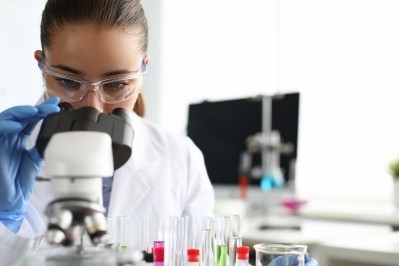Developing deodorising ingredients based on an ex vivo sweat model

Back in 2018, Symrise’s Director of Microbiology Research, Steffen Nordzieke, and his team were tasked with developing a new and sustainable deodorising ingredient from renewable sources that also didn’t cause any negative effects on the underarm microbiome.
Nordzieke said they started by screening green and sustainable materials and that the development was based on single species. “There are many things to consider, efficacy is only one point,” he shared. “We start with efficacy and if that’s good then we move on the assess other factors. Then after that’s all done, we will finally start an in vivo study.”
“We now know that these bacteria affect each other, so the process is more complex than it once was,” he explained. “For example, some bacteria are fine on your skin but under your armpit is considered a ‘bad guy’ as it causes an odour.
Starting with an ex vivo model
To help initially assess ingredients, the team developed an ex vivo model.
“We took sweat from volunteers and incubated the sweat for 48 hours with and without our ingredients, shared Nordzieke. “Then we had an ‘odour panel’ to give a verdict.”
“We looked at whether our model could reflect real life,” he continued. “We saw that the typical sweat odour developed in the small tubes so then we could start our identification process on materials. We put our ingredients in there to incubate to see if it was able to reduce the odour.“
The team also wanted to better understand the full impact the ingredient was having on the microbiome while it was acting on the sweat.
They checked various ingredients, including a substance from Symrise’s portfolio, SymDeo B 125, and triclosan, a traditional deodorising ingredient that the company doesn't use. These were checked as candidates that already had good efficacy, but that perhaps worked to tackle the sweat odour in a different way.
Nordzieke said that when they tested “old-school ingredient” triclosan they found that it wiped out all bacteria apart from a tiny amount of one species, which then wouldn’t take long to proliferate.
“We realised that this was a clear downside of triclosan usage,” he shared. “But in our new ingredient we haven’t detected any of these kinds of issues.”
“We know odour development is connected to Anaerococcus bacteria – an anaerobic bacteria in sweat – and in our untreated samples it gets more of time,” he shared. “Our new ingredient is able to reduce it to stop it from proliferating.”
On to the ‘sniffing study’
After good results in the ex vivo study, the team moved on to an in vivo study which Nordzieke dubbed a ‘sniffing study’. “The left side was untreated and right side was treated and this worked well, we saw the desired effect, but it was boring and we didn’t have microbiome data,” he explained.
So next, Symrise undertook an in vivo study with three different control groups to analyse the microbiome by swabbing, as final proof that the model worked and to get the much-needed information on the microbiome.
This study was conducted in Europe, and featured three different test panels with 30 participants in each panel. One against untreated sweat; one against a placebo; and one against Symrise’s benchmark (SymDeo B 125), which had worked well in the previous studies.
The study finished in June this year and according to Nordzieke, it revealed two important things: “Our new ingredient is microbiome-friendly and it reflected the results from the ex vivo model,” he said.
“It worked well against the untreated and placebo samples as well as compared to SymDeo B125,” he continued. “So, we know that we’ve developed a cool ingredient and that our ex vivo tests worked.”
Nordzieke said it’s still early days for the discovery and that because the ‘sweat model’ was based on males based over 30 there was now a need to go international and test the ingredient on more diverse types of sweat.
“We want to test people all over the world. We know the system works robustly in our lab and now we need to test more” he said. “Also, your left armpit is completely different to your right armpit.”
Nordzieke said the study will form part of Symrise’s overarching Symprobiome platform, which is “our larger idea of combining all we know about human microbiome.”
The platform combines all of Symrise’s research findings about the microbiome in different areas of the body: skin, oral, scalp, sweat and gut together in one place.






















